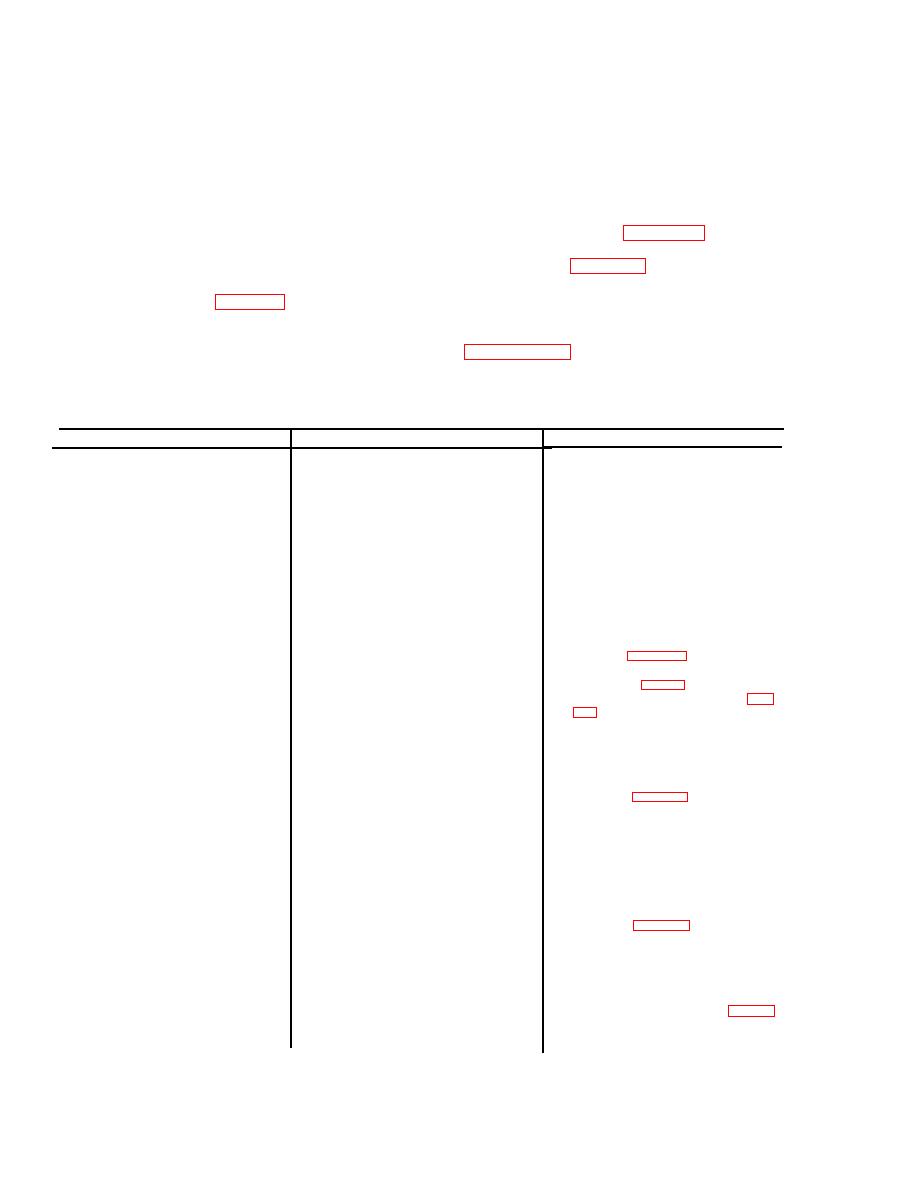
TM 11-6625-2629-14&P
troubleshooting chart are presented in sequence
7-8. Test Setup
so that the user can trace the fault to the par-
a. The modulation meter measures deviation of
ticular stage. When trouble has been traced to a
a frequency-modulated carrier. Some faults with
stage, a tube check or voltage and resistance
the modulation meter can be determined by using
measurements should disclose the defective
an unmodulated carrier input. The use of an
component part,
unmodulated carrier. can help determine faults in
b. Use of Chart. The troubleshooting chart is
the local oscillator, if, limiter, and discriminator
designed to supplement the organizational
circuits. A modulated carrier is required to
troubleshooting
c h a r t (table 4-3). If no
completely check the discriminator and the audio
operational symptoms are known, perform the
circuits.
functional testing (para 4-12),
b. Connect the output of the fm signal
CAUTION
g e n e r a t o r to the input connector of the
If operational symptoms are not known,
modulation meter (fig. 7-13). Connect the
or if they indicate the possibility of short
vacuum-tube voltmeter to the audio output of the
circuits, check for shorts as described in
modulation meter. Use a shielded lead.
7-9. Localizing Trouble
a. General. The p r o c e d u r e s i n
the
Table 7-.3. General Support Troubleshooting Chart
Symptom
Probable trouble
Correction
N O ac power is applied to the power
1. Power indicator lamp DS1 does not
Check ac source. Check power cord.
light, no filament or B+ voltage.
Defective POWER switch S1.
Replace switch S1.
Replace fuse. If replaced fuse blows,
Open fuse F1 or F2 in power supply.
check size of both fuses (2 amp,
2 5 0 V , type 3AG for 115. volt
operation and 1 amp, 250V, type
3AG for 230-volt operation). Check
capacitors C101 and C102 for short
circuit<
Replace lamp DS1. Replace socket.
Defective lamp DS1 or defective lamp
2. Power indicator lamp DS1 does not
socket.
light.
Modulation meter is
operative.
Defective mixer diode CR1.
Replace CR1.
3. With unmodulated carrier input,
Replace V1 (para 7-26c ).
Defective local oscillator tube V1.
L I M I T I N G meter Ml does not
Defective if amplifier stage V2.
read at any position of the
Check tube and voltages and
resistances (fig. 7-4).
FREQUENCY
RANGE-MC
Check voltages and resistances (fig.
Defective integrated circuit V1 (assy
switch or TUNING control.
MP-14603),
C h e c k tube. Check voltages and
Defective limiter stage V7.
Check Ml and R51.
A defective component in the limiting
indicator circuitry.
Set dial to proper reading; tighten
4. With unmodulated carrier input,
Dial slipped on tuning shaft.
setscrews (fig. FO-4).
L I M I T I N G meter Ml reads at
f r e q u e n c y other than that of
incoming signal. FREQUENCY
R A N G E - M C switch setting is
correct,
Note: Be sure that the frequency
at which the LIMITING meter is
indicating is not an image.
5. With unmodulated carrier input,
Set rotor to correct band; align shafts
Rotor in oscillator is not aligned with
L I M I T I N G meter Ml reads at
FREQUENCY RANGE-MC switch
and knob (fig. FO-4).
frequency not within the correct
setting.
FREQUENCY
RANGE-MC
setting.
6. With unmodulated carrier input,
Defective limiter tube V7.
Replace V7.
CARRIER SHIFT meter M2 does
Defective stage V8 or V9.
Replace d e f e c t i v e t u b e . Check
not respond as TUNING control
voltages and resistances (fig. 7-4
is varied.
and 7-5).
7-6


